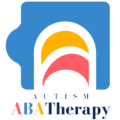Nonverbal Autism: Everything You Need to Know
Nonverbal autism is a unique aspect of the broad spectrum of autism spectrum disorder (ASD), characterized by individuals who either do not speak or use very few words. In this comprehensive guide, we will delve into the symptoms, causes, and treatment options for nonverbal autism, shedding light on effective communication interventions, early intervention strategies, and the importance of a multidisciplinary approach.
Defining Nonverbal Autism
What is Nonverbal Autism?
Nonverbal autism, also referred to as nonspeaking autism or minimally verbal autism, is a condition where individuals face challenges in verbal communication. This subset of autistic individuals may rely on alternative forms of communication, such as gestures, picture exchange communication systems (PECS), or other nonverbal methods.
Recognizing Symptoms of Nonverbal Autism
Limited or Absent Verbal Communication
The hallmark symptom of nonverbal autism is the limited or complete absence of spoken language. Individuals may use single words or short phrases, and some may not use verbal communication at all.
Challenges with Social Interaction
Nonverbal autistic individuals often experience difficulties in social interaction. This may manifest as limited eye contact, challenges in understanding facial expressions, and struggles with grasping social cues.
Communication through Alternative Means
To compensate for the lack of verbal communication, nonverbal autistic individuals may adopt alternative methods such as PECS, sign language, or electronic communication devices.
Expressive Language Delay
In cases of nonverbal autism, there may be a delay in expressive language development. This delay can pose challenges in conveying thoughts, emotions, and needs verbally.
Causes and Contributing Factors
Neurodevelopmental Factors
Nonverbal autism, like other forms of ASD, is believed to have neurodevelopmental origins. Disruptions in early brain development may contribute to the communication challenges observed in nonverbal autistic individuals.
Genetic Influences
Research in autism spectrum disorders suggests a genetic component, with certain genetic mutations and conditions like Fragile X syndrome being associated with an increased risk of ASD.
Communication Interventions for Nonverbal Autism
Picture Exchange Communication System (PECS)
PECS is a structured communication system that involves using pictures or symbols to facilitate communication. It is particularly beneficial for nonverbal and minimally verbal children with autism.
Speech Therapy
Speech therapy plays a crucial role in supporting nonverbal autistic individuals. Therapists work on improving oral motor skills, introducing alternative communication methods, and fostering language development.
Early Intervention
Early intervention is key in addressing the communication challenges associated with nonverbal autism. Intervening during the early childhood years can significantly impact language and social communication skills.
Augmentative and Alternative Communication (AAC) Devices
AAC devices, including electronic communication devices with voice output, provide nonverbal autistic individuals with a means to express themselves. These devices can range from simple picture-based systems to sophisticated electronic devices.
The Multidisciplinary Approach
Recognizing the diverse needs of nonverbal autistic individuals, a multidisciplinary approach is essential. Collaborative efforts involving speech therapists, behavioral therapists, educators, and parents contribute to a holistic and tailored intervention plan.
Conclusion
In conclusion, understanding nonverbal autism involves recognizing its symptoms, exploring potential causes, and embracing effective communication interventions. It’s crucial to approach nonverbal autism with patience, empathy, and a commitment to fostering meaningful ways of expression. By combining early intervention, communication therapies, and a multidisciplinary approach, we can unlock the potential of nonverbal autistic individuals, providing them with the tools to communicate and connect with the world around them.





